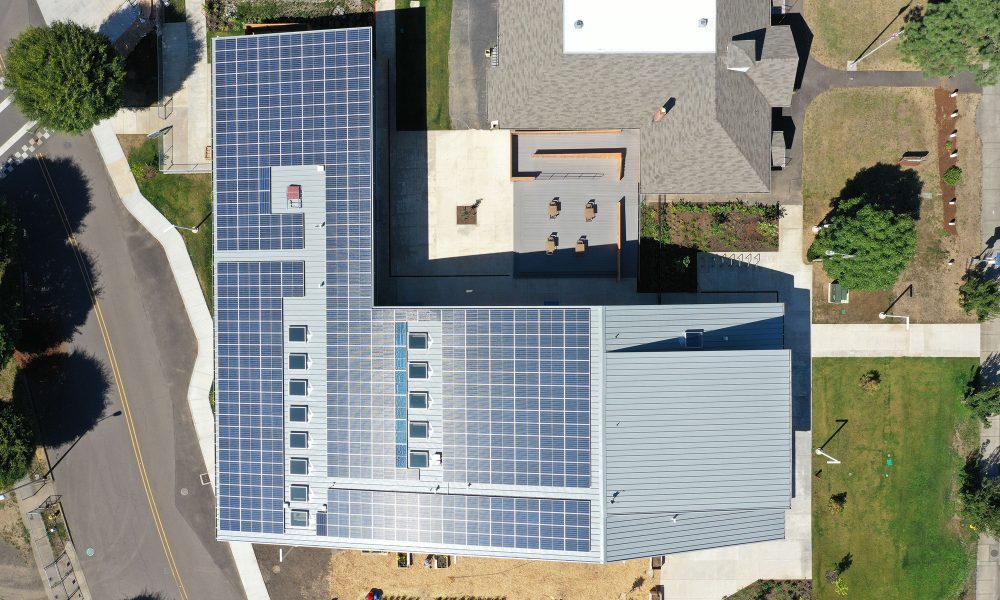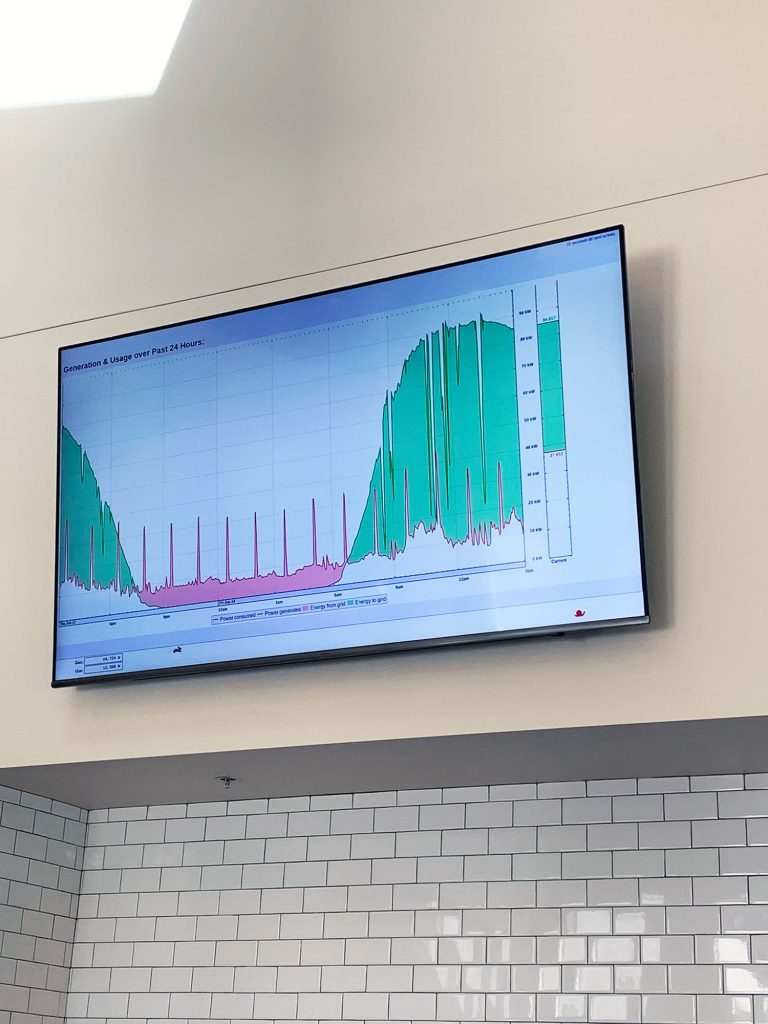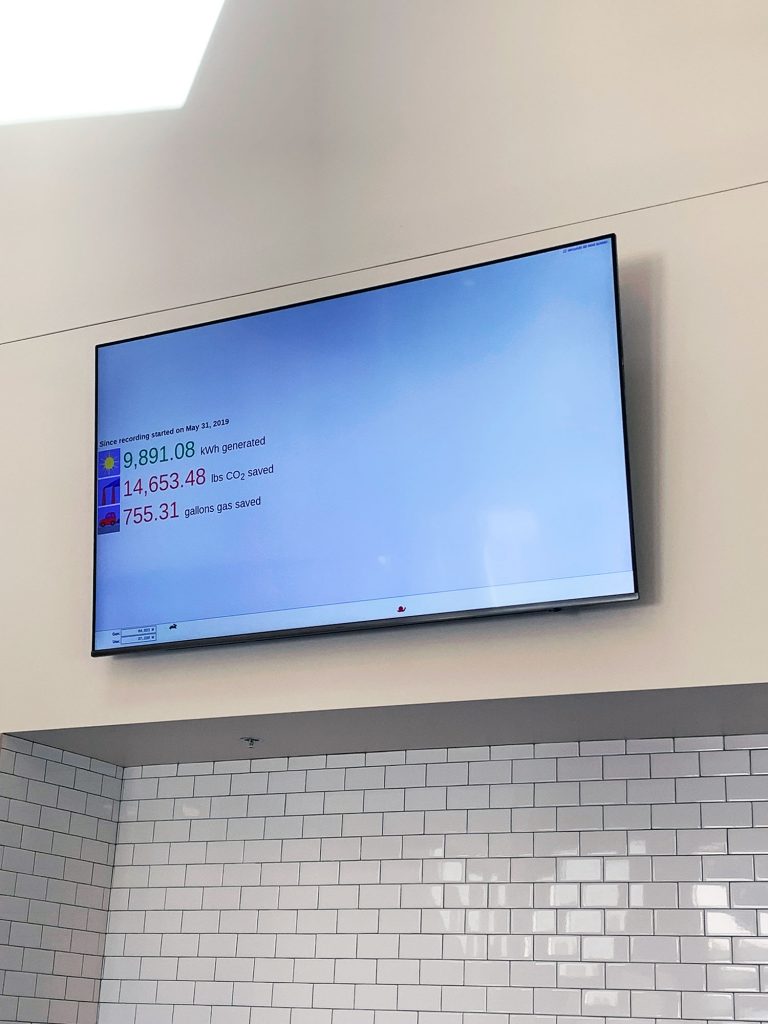The site of Creekside Community High School is less than a half-mile away from the Tigard High School in Tigard, Oregon. But the two facilities couldn’t be further apart.
Creekside–the Tigard-Tualatin School District’s center for students requiring a non-traditional path toward completing their education–has long resided in an aging schoolhouse wedged just off the driveway leading into the district. From there, students can see up the road to Tigard High School, its football, soccer, and baseball fields; tennis courts; swim center; and student theater. On site, there was a palpable sense that the alternative education path meant starting life on the outside looking in.
But Creekside is changing that. With the completion of its newest addition, the school will achieve net-zero energy-generating enough power on-site to offset, or even exceed, the needs of the facility. In an environment where students are in real need of inspiration, Creekside is now offering them not just a point of pride, but a facility that works to improve their education experience as a whole.
THE PITCH: INSPIRE THROUGH DESIGN
The project’s primary ambition is to inspire. The students who attend Creekside are on the alternative education track. That is, students who require an approach to their education that is augmented from what is offered in a traditional public school.
The trouble is these schools tend to be afterthoughts – existing in repurposed storefronts; modular trailers; or, in Creekside’s case, an old schoolhouse. With a population of students in need of more attention and support to complete their education, the design of their surroundings can play a critical factor. By creating a space they can be proud to attend and that is outfitted with modern learning tools, their odds of success stand to improve.
HOW IT’S DONE: SIMPLIFY THE PATH TO NET-ZERO
Designing for net-zero energy is often misunderstood as a lengthy and costly addition to the design process that complicates the delivery of otherwise high-performing buildings. However, complexity isn’t necessarily the key. While designing a facility to reach net-zero energy goes beyond a basic energy-in/energy-out equation, it has much more to do with mitigating energy needs from across the building’s mechanical, electrical, and plumbing systems. This means finding small amounts to take from each of these buckets, a piece at a time until the need is manageable by an on-site supply.
Bora Architects–the Portland-based architecture firm that led the design–was sensitive to the need to implement passive design strategies so that the load of active systems could be minimized. Working closely with Glumac in the design process, the most effective passive design strategies were identified early–optimized envelope, natural ventilation, reliance on daylighting and strategic shading. Ultimately, the design team would deliver a Passive House-influenced envelope that performs substantially better than code minimum, and a basic daylighting concept supplemented with a full LED package.
To supplement the conditioning needs, heat recovery ventilators and a VRF system capture heat energy from internal sources such as computers, servers, lights and other equipment that use energy to heat the building.
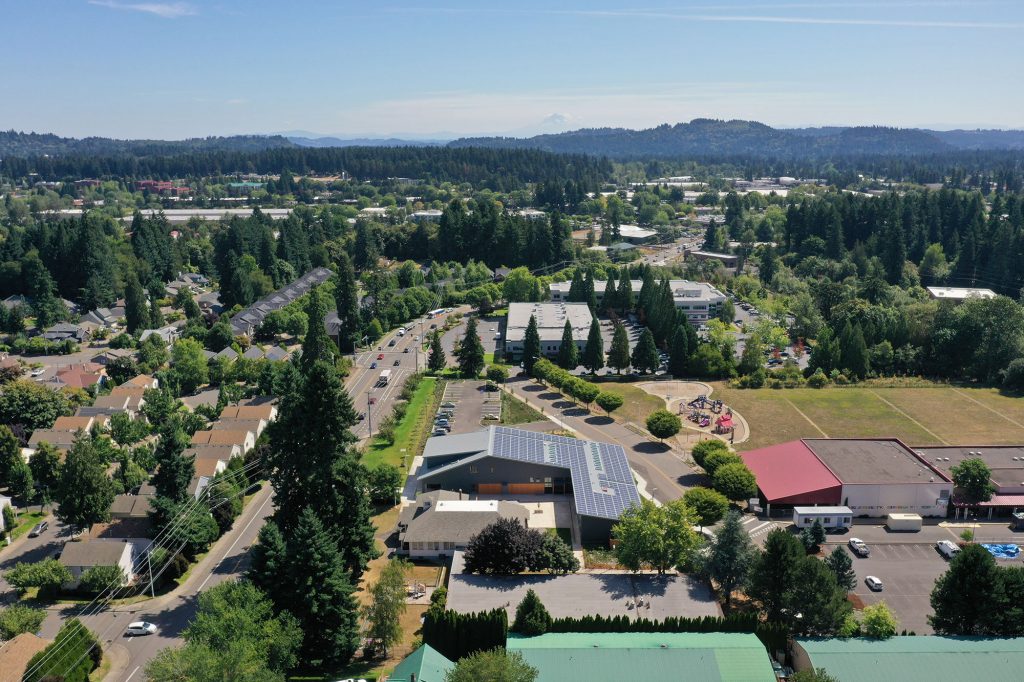
Onsite supply remains a major factor. A rooftop photovoltaic array plays a large role for the facility reaching its net-zero energy goal (the array is expected to produce as much as 148,000 kilowatt hours per year, just slightly over the amount needed to power the school). The design team worked together early in the project to optimize the geometry of the building itself for both passive design elements and to allow the PV panels to directly attach to a southern-facing standing seam metal roof– packing the panels close together and maximizing the capacity of the available roof area. This effort resulted in a 30% reduction in first costs for the PV array by eliminating the racking systems entirely and simplifying the structural systems supporting the array. With every corner of the school’s mechanical, electrical and plumbing system optimized to reduce and reuse its own energy, the necessary size of the PV array is reduced to something that fits nicely on the rooftop and did not exceed initial budgets.
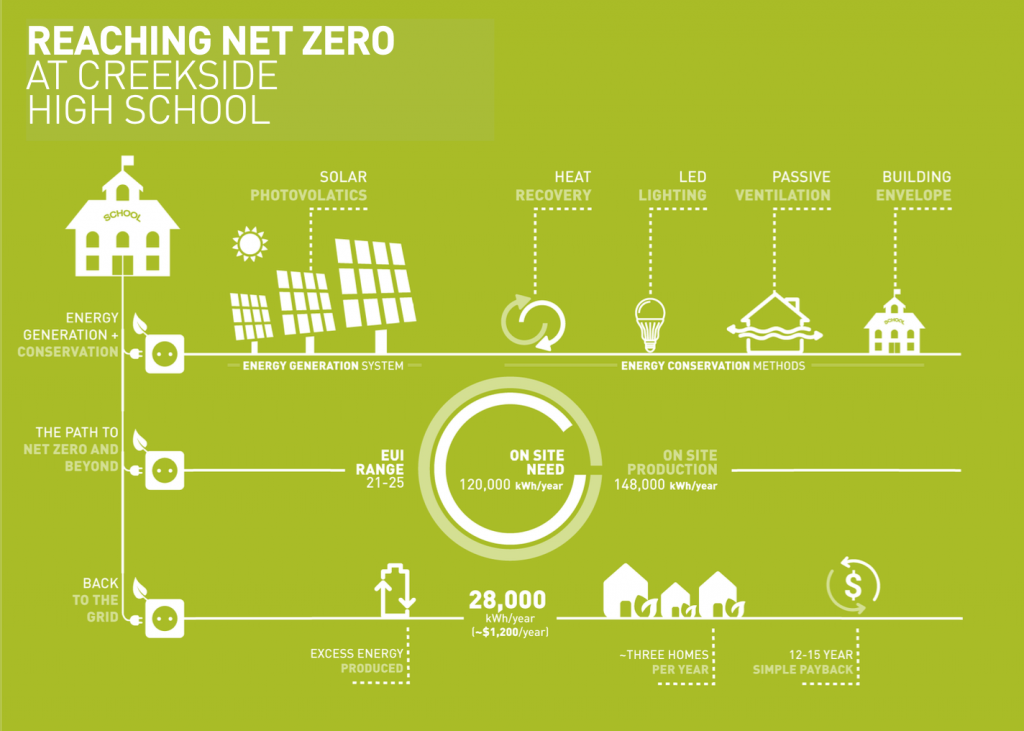
THE OUTCOME: SOCIALIZING BUILDING ENERGY USE
There’s an old adage in energy departments that says, “Buildings don’t use energy. People do.” Net-zero energy isn’t something that’s achieved by the building alone–it requires an end-user to participate. In a K-12 setting like Creekside Community High School, this doubles as a learning opportunity for students. In the main concourse area, dashboards are prominently displayed and offer clear insight into the school’s energy usage, demonstrate to students how the systems function, and perhaps most importantly, how their actions can directly improve the building’s performance. The goal is to not only keep the facility on track but to also reframe how the students view their role within the building, further socializing energy usage. After construction was completed, the design team met multiple times with the staff and students, going over how to use the building in an energy-efficient and mindful way. The science and math programs will also integrate energy studies with the information provided at the dashboard.
This goes hand-in-hand with the school’s curriculum and extra-curricular activities. The Cascade Education Corps has long partnered with students at the school to restore streams and habitats across the Portland metro area. In addition, a partnership with Supa Fresh Youth Farm, a community support agricultural program, provides students with experiences in sustainable organic farming practices. With a student body already engaged in the ecological development of the city, the school’s focus on energy reduction stands to aid in their development as a generation that is mindful of the type of environmental stewardship necessary for the continued sustainable development of the city’s infrastructure.
The ROI on a net-zero energy project should be closely considered for decision making. The simple payback for the building is expected between 12-15 years; taking into account both energy conservation and generation measures. The keystone goal of the design was to refresh the possibilities of what lies ahead for students in the alternative program. The facility’s design lends itself to numerous learning opportunities, particularly in fields like STEM, which are underserved in alternative schooling environments. And facilitating that kind of community stewardship is what leads these projects to meeting the triple bottom line of People/Planet/Profit.
